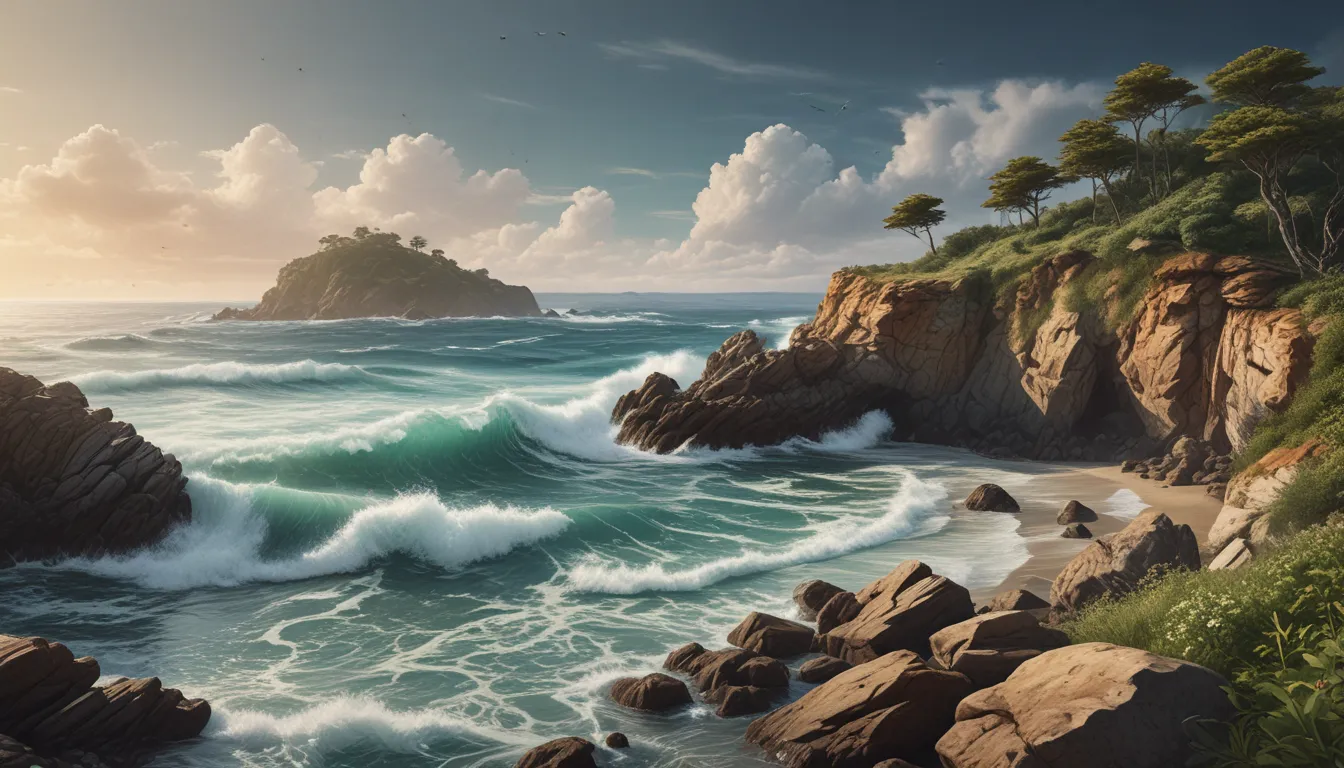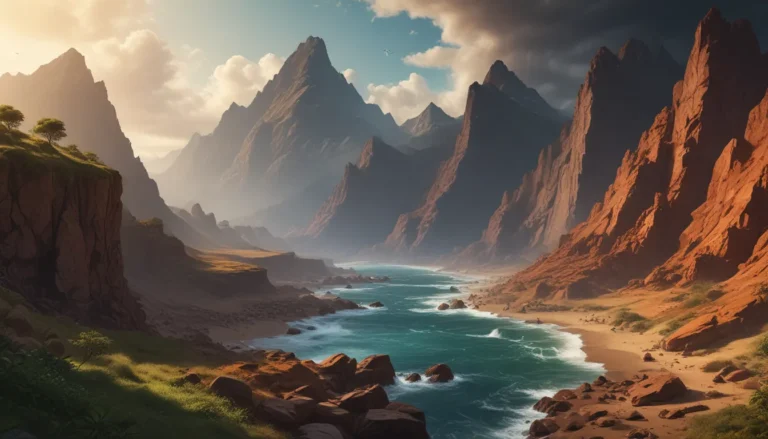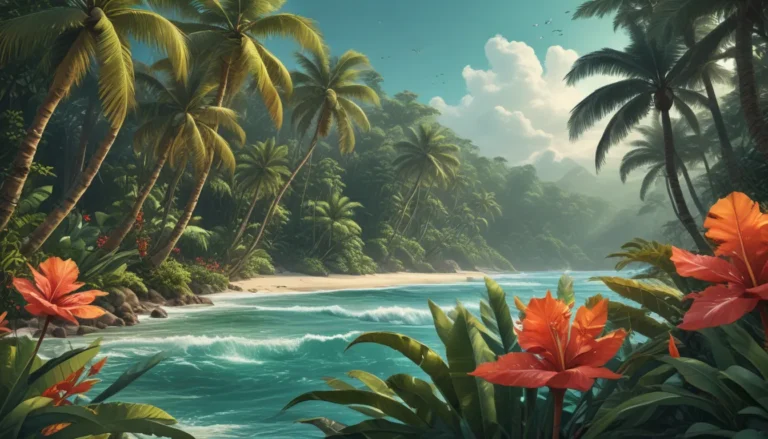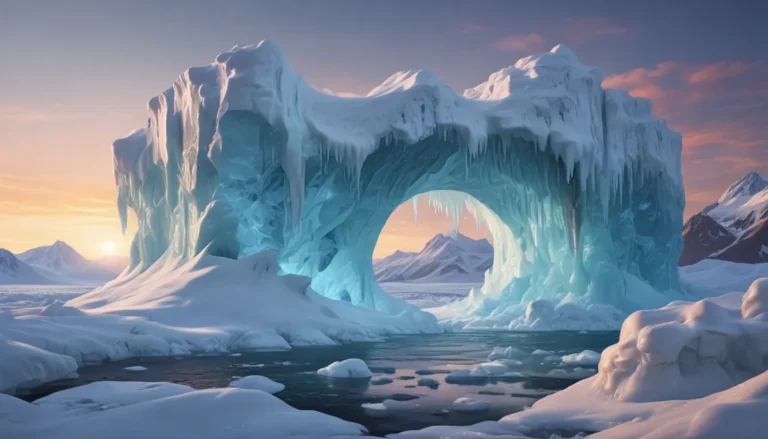A Note About Images: The images used in our articles are for illustration purposes only and may not exactly match the content. They are meant to engage readers, but the text should be relied upon for accurate information.
Are you curious about the incredible ecosystem that thrives along the edges of lakes, rivers, and oceans? The littoral zone, with its unique blend of land and water, is a vibrant and diverse habitat teeming with life. From its vital role in supporting marine ecosystems to its vulnerability to human activities and climate change, the littoral zone is a fascinating subject to explore. Let’s dive in and uncover the astounding facts that make this coastal environment so captivating!
The Littoral Zone: A Coastal Wonderland
At the intersection of land and water lies the littoral zone, also known as the coastal zone or intertidal zone. This dynamic environment is characterized by its rich biodiversity and essential ecological functions, making it a critical component of our planet’s natural balance.
Delving into Rich Biodiversity
One of the most striking features of the littoral zone is its incredible diversity of plant and animal species. From seaweeds swaying in the currents to shorebirds hunting for food along the shoreline, the littoral zone is a haven for a wide array of organisms.
Unveiling the Intertidal Habitat
Within the littoral zone lies the intertidal habitat, where the rhythmic ebb and flow of tides expose the area to both air and water. This ever-changing environment is a fascinating blend of physical and biological processes, creating a dynamic ecosystem unlike any other.
Adapting to Extreme Conditions
Plants and animals in the littoral zone have evolved unique adaptations to withstand the challenges of their environment. From barnacles with hard shells that protect them during low tide to mangroves with specialized root systems that cope with fluctuating salinity levels, life in the littoral zone is a masterclass in resilience.
Serving as a Vital Nursery
The littoral zone acts as a crucial nursery ground for many marine organisms, providing shelter and abundant food for young fish, crabs, and other species. These protected areas within the intertidal zone promote the growth and survival of future generations of marine life.
Shaping the Coastline: Erosion and Sedimentation
Waves and currents in the littoral zone play a vital role in shaping the coastline through erosion and sedimentation processes. As rocks are eroded and sediments are deposited, the landscape is molded, influencing the distribution of species and the overall ecosystem dynamics.
Upholding Important Ecological Functions
Beyond its role in shaping the coastline, the littoral zone serves as a critical filter, trapping sediments and pollutants while providing a buffer between land and water. These essential ecological functions are key to maintaining the health and balance of marine ecosystems.
Embracing Littoral Forests
In some coastal regions, unique ecosystems known as littoral forests dominate the landscape. These forests, comprised of salt-tolerant trees like mangroves, offer vital habitat for numerous species and act as a natural barrier, protecting coastlines from erosion and storm surges.
Navigating Migration Pathways
The littoral zone serves as a vital migration pathway for a variety of species, including birds, fish, and marine mammals. During their annual journeys, these animals rely on the resources and shelter provided by the intertidal habitats, highlighting the interconnected nature of coastal ecosystems.
Addressing Human Impact
Despite its resilience, the littoral zone is not immune to the impacts of human activities. Coastal development, pollution, and overfishing pose significant threats to this delicate ecosystem, underscoring the importance of conservation and sustainable management practices.
Exploring Research Perspectives
Dedicated scientists are continually studying the complexities of the littoral zone to unravel its ecological importance and guide conservation efforts. Their research offers valuable insights into the dynamics of coastal ecosystems, informing strategies for protecting and preserving these vital habitats.
Embracing Tourism and Recreation
The beauty and uniqueness of the littoral zone have made it a sought-after destination for tourists and nature enthusiasts. Whether it’s exploring sandy beaches, discovering tide pools, or hiking along coastal trails, the littoral zone offers a wealth of opportunities to connect with nature and appreciate its wonders.
Responding to Climate Change Challenges
The looming threat of climate change, with its rising sea levels and shifting weather patterns, poses significant challenges to the littoral zone. Coastal erosion, habitat loss, and changes in species distributions are visible impacts that necessitate proactive measures to mitigate the effects of climate change on coastal ecosystems.
Advocating for Littoral Zone Conservation
Global efforts are underway to conserve and protect the littoral zone through initiatives such as establishing marine protected areas, promoting sustainable fishing practices, and reducing coastal pollution. These conservation efforts are essential for safeguarding the biodiversity and ecological functions of this unique ecosystem.
Recognizing the Importance of the Littoral Zone
Beyond its ecological functions, the littoral zone provides a range of ecosystem services that benefit both nature and humanity. From shoreline stabilization and carbon sequestration to providing recreational values, the littoral zone contributes significantly to our well-being and the health of the planet.
Embracing Sustainable Coastal Management
Adopting sustainable coastal management practices is crucial for ensuring the long-term survival of the littoral zone. By balancing the needs of human communities with the preservation of this delicate ecosystem, we can safeguard its continued existence for future generations to enjoy and appreciate.
Conclusion: Preserving the Marvels of the Littoral Zone
In conclusion, the littoral zone stands as a remarkable and vital component of our planet’s landscapes. Its extraordinary diversity, ecological functions, and resilience make it a coastal marvel worth protecting and cherishing. By understanding the significance of the littoral zone and the threats it faces, we can work together to safeguard this unique ecosystem for generations to come.
Next time you find yourself by the sea or a coastal area, take a moment to marvel at the beauty and complexity of the littoral zone. It is a wondrous habitat that deserves our attention, respect, and dedication to conservation. Let’s join hands in preserving the wonders of the littoral zone for the benefit of all living beings on Earth.
FAQs: Exploring the Littoral Zone
-
What is the littoral zone?
The littoral zone is the area where land and water meet, typically found along coastlines or shorelines of lakes, rivers, and oceans. -
What kind of organisms can be found in the littoral zone?
Various species of plants, animals, and marine life inhabit the littoral zone, including algae, seaweeds, mollusks, crustaceans, fish, and birds. -
How does the littoral zone contribute to coastal erosion control?
The vegetation in the littoral zone, like mangroves and salt marshes, helps stabilize the shoreline and reduce the impact of waves and currents, thus mitigating erosion. -
Is the littoral zone affected by human activities?
Yes, human activities such as pollution, coastal development, and overfishing can harm the littoral zone, leading to habitat degradation and loss of biodiversity. -
Can I visit the littoral zone as a tourist?
Absolutely! Many coastal areas offer visitors opportunities to explore and appreciate the beauty of the littoral zone through activities like beachcombing, snorkeling, and birdwatching.
Embracing the Marvels of the Littoral Zone
As we journey through the wonders of the littoral zone, let us remember the importance of preserving this coastal marvel for future generations. By celebrating its biodiversity, understanding its ecological functions, and advocating for its conservation, we can ensure that the littoral zone remains a vibrant and thriving ecosystem for all to enjoy. Let’s continue to explore, appreciate, and protect the wonders of the littoral zone, embracing its beauty and significance with reverence and dedication.






